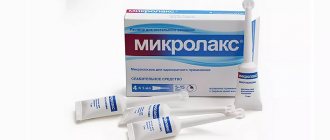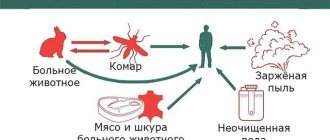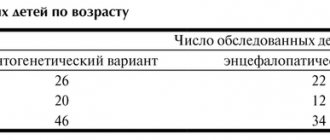Nasal tamponade is a medical procedure aimed at stopping nosebleeds by introducing gauze swabs soaked in healing agents into the nasal cavity. Depending on the location of the injured area, an anterior nasal tamponade is performed (the tampon is inserted through the nose) or a posterior one (the tampon is inserted through the oral cavity). This technique allows you to stop serious hemorrhages, protect the patient from significant blood loss and a number of other detrimental health consequences.
Causes of nosebleeds
The most common type of bleeding is bleeding from the nasal cavity. Most often, it is a symptom of a pathological condition of the body, and may also indicate the presence of diseases of the nose and its paranasal sinuses, injuries, and stress.
There are several reasons that provoke nosebleeds:
- traumatic
– the occurrence of traumatic lesions of the nose of various types, including as a result of surgical intervention;
- symptomatic
– the appearance of nosebleeds as a result of symptomatic manifestations of diseases of the kidneys, liver, heart, lungs, circulatory and cardiovascular systems, congestive hyperemia, infectious diseases and other pathologies;
- commenting
(going along with menstruation) and vicarious (replacing missing menstruation) nosebleeds in women.
Whatever the cause, bleeding must be stopped as soon as possible.
How to stop nosebleeds at home
Minor nosebleeds can be stopped at home using several methods:
- by inserting a tampon into the nose, which is soaked in three percent hydrogen peroxide or soaked in vasoconstrictor drops - for example, in naphthysine;
- taking a deep breath in through the nose and exhaling through the mouth while simultaneously applying cold to the area of the back of the head and bridge of the nose.
In this case, the person should be in a sitting or semi-sitting position and lower his head to prevent blood from flowing into the oropharynx. If these methods do not help, you must immediately contact a medical facility, where a doctor will perform a posterior or anterior nasal tamponade.
Symptoms
A bloody nose is an indicator of an injury or illness. There are anterior and posterior bleeding. In the first case, blood flows out of the nose through the nostrils. In the second, due to damage to deeper vessels, blood flows down the back wall of the throat, which can lead to hemoptysis and vomiting.
In order for the treatment of nosebleeds in children to be successful, it is important to establish its cause, since the symptoms in most cases are approximately the same. A nosebleed may be accompanied by dizziness, weakness, shortness of breath, thirst, tinnitus and other symptoms.
Types of nosebleeds
If you have a nosebleed, you should not tilt your head back; you should tilt it slightly forward and pinch your nose with your fingers.
They vary in intensity and duration. Depending on the location, they are divided into anterior and posterior.
More than 90% of all nosebleeds are localized in the anterior nasal septum. Here is the so-called Kisselbach area, which is also called the bleeding area. Frequent damage to blood vessels in this area is due to the fact that there are many interconnected capillaries. In addition, the mucous membrane here is thin and has practically no submucosal layer. The vessels located in this place can be damaged even from minor mechanical influences or when pressure increases.
Bleeding with such localization is not dangerous to life and health, it does not differ in intensity and quickly stops on its own. In this case, the simplest measures are sufficient.
Posterior bleeding is caused by damage to larger vessels located in the deep layers of the nasal cavity. In this case, significant blood loss occurs, which can be life-threatening. It is usually impossible to stop bleeding at home; specialized help is required.
Symptoms depend on the intensity and location, the amount of blood lost, gender, and age. Bleeding varies in severity:
- minor – there are no pathological symptoms, there is no danger, from a few drops to several tens of milliliters of blood are lost;
- mild - about 500 ml can be lost in an adult (about 10%), there is pallor of the mucous membranes and skin, weakness, flies flashing before the eyes, dizziness, a feeling of thirst, tinnitus, palpitations;
- medium - about 15-20% of blood is lost, symptoms intensify, pressure drops, shortness of breath and tachycardia appear;
- severe - with losses of more than 20%, hemorrhagic shock occurs, manifested by lethargy, thread-like pulse, increasing tachycardia, a sharp decrease in pressure, and impaired consciousness.
Causes
Local causes include trauma, nasal fracture, damage to the mucous membrane, foreign body entry into the nostril, degeneration of the mucous membrane, neoplasms in the nose, and ENT diseases.
Common causes include fragility of the walls of blood vessels, infectious diseases, lack of vitamins, increased blood pressure due to exacerbation of chronic diseases, and various blood diseases.
Also, nosebleeds can be caused by migraines, severe coughing or sneezing, sunstroke, a reaction to constant exposure to dry air or to medications.
Treatment
First aid for nosebleeds is to sit the child upright, tilt the head forward, pinching the nostrils with your fingers, straighten the neck so that the head is straight, put ice on the bridge of the nose and insert a tampon into the nostril. A swab can be soaked in hydrogen peroxide. It is also recommended to put ice on the back of your head. If the bleeding does not stop within 10 minutes or more, an ambulance is needed.
You cannot throw your head back, blow your nose, or pick your nose.
If bleeding occurs periodically, you should consult a doctor. The otolaryngologist in our clinic will conduct all the necessary studies (pharyngoscopy and rhinoscopy), prescribe tests and make a diagnosis followed by treatment.
A child's nose may bleed for a variety of reasons. This could be a mucosal injury or a serious illness. If bleeding recurs, an otolaryngologist will be able to understand its causes.
Technique for performing anterior nasal tamponade
Anterior nasal tamponade is carried out after preliminary anesthesia through the use of local anesthetics - lidocaine, novocaine and others. The algorithm of actions is as follows:
- The patient is seated with his head slightly tilted forward. If this position cannot be assumed, he lies on his side or on his stomach.
- The patient picks up a tray designed to collect blood, or it is placed on an oilcloth next to the patient’s face.
- The nasal cavity is cleared of blood clots, and the accumulated blood should be spat into a tray.
- The mucous membranes of the nose are treated with an anesthetic.
- Turunda, about 70 centimeters long and 1-1.5 centimeters wide, is moistened with a three percent solution of hydrogen peroxide or soaked in petroleum jelly and hemostatic agents.
- Using tweezers, the doctor grabs the end of the turunda, making an indentation of 4 centimeters.
- Turunda is inserted into the nasal cavity to the posterior section.
- By placing a turunda from the bottom of the cavity to the nasopharynx in the form of an accordion, anterior tamponade of the nasal cavity is performed.
- If there is bleeding on both sides, bilateral nasal packing is performed.
- A sling-shaped bandage is applied to the nose.
- Used materials are disinfected and, if necessary, disposed of.
Symptoms
A bloody nose is an indicator of an injury or illness. There are anterior and posterior bleeding. In the first case, blood flows out of the nose through the nostrils. In the second, due to damage to deeper vessels, blood flows down the back wall of the throat, which can lead to hemoptysis and vomiting.
In order for the treatment of nosebleeds in children to be successful, it is important to establish its cause, since the symptoms in most cases are approximately the same. A nosebleed may be accompanied by dizziness, weakness, shortness of breath, thirst, tinnitus and other symptoms.
Causes
Local causes include trauma, nasal fracture, damage to the mucous membrane, foreign body entry into the nostril, degeneration of the mucous membrane, neoplasms in the nose, and ENT diseases.
Common causes include fragility of the walls of blood vessels, infectious diseases, lack of vitamins, increased blood pressure due to exacerbation of chronic diseases, and various blood diseases.
Also, nosebleeds can be caused by migraines, severe coughing or sneezing, sunstroke, a reaction to constant exposure to dry air or to medications.
Since the range of causes is very wide, treatment of nosebleeds in children begins with clarifying the diagnosis. The doctor takes blood tests, conducts various types of examinations (rhinoscopy and pharyngoscopy) and makes a diagnosis based on the data.
Are nosebleeds dangerous?
A single nosebleed that stops quickly is not life-threatening.
But repeated and prolonged episodes of nosebleeds can cause quite serious complications. Possible consequences of frequent nosebleeds include:
• Development of chronic iron deficiency anemia. It is accompanied by general weakness, fatigue, decreased concentration, deterioration of the condition of the skin and its appendages. And long-term anemia causes hypoxia (lack of oxygen) of tissues with the development of not always reversible changes in the heart and other organs.
• Deterioration of the gastrointestinal tract, which is associated with the negative influence of ingested blood.
Treatment
First aid for nosebleeds is to sit the child upright, tilt the head forward, pinching the nostrils with your fingers, straighten the neck so that the head is straight, put ice on the bridge of the nose and insert a tampon into the nostril. A swab can be soaked in hydrogen peroxide. It is also recommended to put ice on the back of your head. If the bleeding does not stop within 10 minutes or more, an ambulance is needed.
You cannot throw your head back, blow your nose, or pick your nose.
If bleeding occurs periodically, you should consult a doctor. The otolaryngologist in our clinic will conduct all the necessary studies (pharyngoscopy and rhinoscopy), prescribe tests and make a diagnosis followed by treatment.
Children's multidisciplinary medical center for children from 0 to 18 years old
07/28/2017 Children often have nosebleeds. Sometimes parents do not pay due attention to this phenomenon. You need to understand that if a child is prone to nosebleeds, the cause may be the development of a dangerous and serious disease. In this case, you need to contact your pediatrician as soon as possible. Nosebleeds occur when the integrity of the vessels in the nasal mucosa is damaged. Causes of nosebleeds: 1. Local:
- Injuries of the nose, mucous membrane when a foreign body is introduced, surgical injuries, after manipulations in the nose
- Acute and chronic rhinitis, inflammation of the sinuses, adenoids
- Dystrophy of the nasal mucosa, deviated nasal septum
- Neoplasms of the nasal cavity
- Drying of areas of the nasal mucosa (very dry and hot air in the room where the child lives; excessive physical stress)
- Dust, tobacco smoke, animal hair - all this causes increased formation of mucus in the nose and fragility of blood vessels on the nasal septum;
2. General:
- Blood diseases (blood clotting disorders, hemorrhagic diathesis, hypo and vitamin deficiencies)
- Severe stress
- At elevated body temperature (infectious diseases, thermal and solar overheating)
- Diseases of the cardiovascular system (hypertension, vascular abnormalities, heart defects, atherosclerosis)
- During sudden changes in barometric pressure (when flying on an airplane, diving, climbing mountains)
- Disturbances in the hormonal system (during puberty, etc.)
- Internal organ injury;
- Liver diseases;
Types of nosebleeds: 1. “Anterior” - characterized by mild bleeding from the anterior sections of the nasopharynx (damage occurs to a vessel located directly on the nasal septum); 2. With “posterior” damage to the posterior parts of the nose occurs (often occurs due to injury, high blood pressure or the development of some serious diseases), the amount of blood loss quickly increases, which poses a threat to life. Such bleeding rarely stops on its own; medical assistance and the use of special methods to stop it are often necessary. HOW TO STOP NOSE BLEEDING? - Stay calm, calm the child; - Sit the child down - slightly leaning forward, head slightly lowered. — Gently squeeze the wings of the baby’s nose with your fingers (in other words, squeeze the nose); - Hold this position for at least 10 minutes (and apply all your parental will to ensure that you do not look into the child’s nose every 30 seconds, checking whether it is still flowing or has already stopped). — While you hold your nose pinched for 10 minutes, it is useful to apply ice cubes or something cold to the bridge of your nose. In addition, it is useful to give your child something cold (ice cream, a glass of ice water through a straw, etc.) to eat or drink. Cold in the mouth effectively stops nosebleeds. - If bleeding continues after 10 minutes, try again for another 10 minutes. If the bleeding does not stop after two 10-minute attempts, call an ambulance. Unfortunately, most mothers and fathers, when faced with a problem such as a sudden nosebleed in their child, get lost and make a number of mistakes. Mistakes that adults make when providing emergency care to children with nosebleeds:
- You cannot tilt the child’s head back - in this case, blood will flow out along the back wall of the nasopharynx and you will not be able to determine whether the bleeding has stopped or not, how intense it is, and besides, you cannot be sure that the child will not choke (if there is blood a lot of);
- You should not stuff cotton wool, tampons or other “plugs” into your child’s nose. The blood will soak into the cotton wool and thicken, gradually drying to the nasal mucosa. Once you pull out the bloody tampons, the bleeding may start again.
- You should not place the child in a lying position - if the bleeding is severe, it will end in bloody vomiting, which almost always leads to choking when lying down. It is best to sit the child upright, slightly tilting his body forward.
- At the same time, there is no need to provoke the child to talk or move - both will increase bleeding.
If the nosebleed is accompanied by some other bleeding (bleeding from the ear, or from the genitals, etc.), you must definitely show the child to the doctor, also if the nosebleeds become regular (every day, every 2 -3 days, once a week, etc.). The need for medical consultation in such circumstances is completely justified, because in rare cases, nosebleeds may not just be the result of a burst vessel in the nose, but a symptom of a dangerous disease. The pediatrician will prescribe all the necessary examinations to exclude diseases dangerous to the child. Health to you and your children! Still have questions? Make an appointment with a pediatrician etc.






